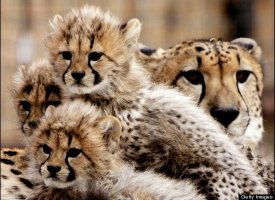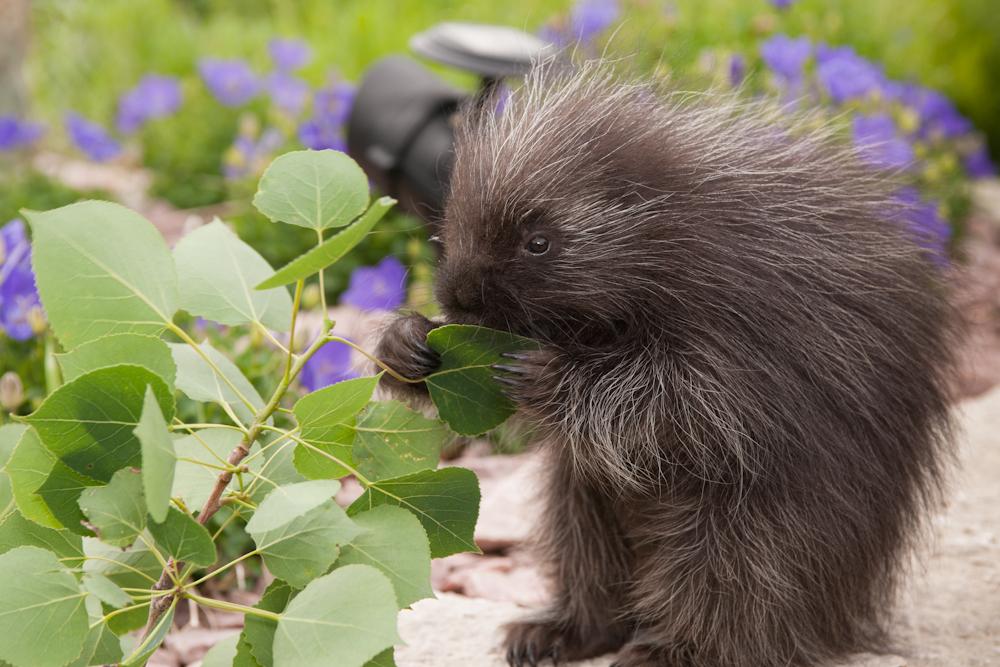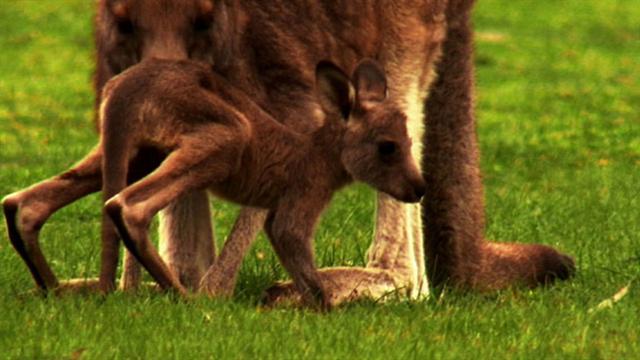Source(google.com.pk)
Early Life
Jane Goodall was born on April 3, 1934, in London, England, to Mortimer Herbert Goodall, a businessperson and motor-racing enthusiast, and the former Margaret Myfanwe Joseph, who wrote novels under the name Vanne Morris Goodall. Along with her sister, Judy, Goodall was reared in London and Bournemouth, England. Her fascination with animal behavior began in early childhood. In her leisure time, she observed native birds and animals, making extensive notes and sketches, and read widely in the literature of zoology and ethology. From an early age, she dreamed of traveling to Africa to observe exotic animals in their natural habitats.
Early Interest in Primates
Goodall attended the Uplands private school, receiving her school certificate in 1950 and a higher certificate in 1952. At age 18 she left school and found employment as a secretary at Oxford University. In her spare time, she worked at a London-based documentary film company to finance a long-anticipated trip to Africa. At the invitation of a childhood friend, she visited South Kinangop, Kenya. Through other friends, she soon met the famed anthropologist Louis Leakey, then curator of the Coryndon Museum in Nairobi. Leakey hired her as a secretary and invited her to participate in an anthropological dig at the now famous Olduvai Gorge, a site rich in fossilized prehistoric remains of early ancestors of humans. In addition, Goodall was sent to study the vervet monkey, which lives on an island in Lake Victoria.
Leakey believed that a long-term study of the behavior of higher primates would yield important evolutionary information. He had a particular interest in the chimpanzee, the second most intelligent primate. Few studies of chimpanzees had been successful; either the size of the safari frightened the chimps, producing unnatural behaviors, or the observers spent too little time in the field to gain comprehensive knowledge. Leakey believed that Goodall had the proper temperament to endure long-term isolation in the wild. At his prompting, she agreed to attempt such a study. Many experts objected to Leakey's selection of Goodall because she had no formal scientific education and lacked even a general college degree.
Observing Chimps in Africa
While Leakey searched for financial support for the proposed Gombe Reserve project, Goodall returned to England to work on an animal documentary for Granada Television. On July 16, 1960, accompanied by her mother and an African cook, she returned to Africa and established a camp on the shore of Lake Tanganyika in the Gombe Stream Reserve. Her first attempts to observe closely a group of chimpanzees failed; she could get no nearer than 500 yards before the chimps fled. After finding another suitable group of chimpanzees to follow, she established a nonthreatening pattern of observation, appearing at the same time every morning on the high ground near a feeding area along the Kakaombe Stream valley. The chimpanzees soon tolerated her presence and, within a year, allowed her to move as close as 30 feet to their feeding area. After two years of seeing her every day, they showed no fear and often came to her in search of bananas.
Discoveries
Goodall used her newfound acceptance to establish what she termed the "banana club," a daily systematic feeding method she used to gain trust and to obtain a more thorough understanding of everyday chimpanzee behavior. Using this method, she became closely acquainted with more than half of the reserve's 100 or more chimpanzees. She imitated their behaviors, spent time in the trees, and ate their foods. By remaining in almost constant contact with the chimps, she discovered a number of previously unobserved behaviors. She noted that chimps have a complex social system, complete with ritualized behaviors and primitive but discernible communication methods, including a primitive "language" system containing more than 20 individual sounds. She is credited with making the first recorded observations of chimpanzees eating meat and using and making tools. Tool making was previously thought to be an exclusively human trait, used, until her discovery, to distinguish humans from animals. She also noted that chimpanzees throw stones as weapons, use touch and embraces to comfort one another, and develop long-term familial bonds. The male plays no active role in family life but is part of the group's social stratification. The chimpanzee "caste" system places the dominant males at the top. The lower castes often act obsequiously in their presence, trying to ingratiate themselves to avoid possible harm. The male's rank is often related to the intensity of his entrance performance at feedings and other gatherings.
Ethologists had long believed that chimps were exclusively vegetarian. Goodall witnessed chimps stalking, killing, and eating large insects, birds, and some bigger animals, including baby baboons and bushbacks (small antelopes). On one occasion, she recorded acts of cannibalism. In another instance, she observed chimps inserting blades of grass or leaves into termite hills to lure worker or soldier termites onto the blade. Sometimes, in true toolmaker fashion, they modified the grass to achieve a better fit. Then they used the grass as a long-handled spoon to eat the termites.
Marriage
In 1962 Baron Hugo van Lawick, a Dutch wildlife photographer, was sent to Africa by the National Geographic Society to film Goodall at work. The assignment ran longer than anticipated; Goodall and van Lawick were married on March 28, 1964. Their European honeymoon marked one of the rare occasions on which Goodall was absent from Gombe Stream. Her other trips abroad were necessary to fulfill residency requirements at Cambridge University, where she received a Ph.D. in ethology in 1965, becoming only the eighth person in the university's long history who was allowed to pursue a Ph.D. without first earning a baccalaureate degree. Her doctoral thesis, "Behavior of the Free-Ranging Chimpanzee," detailed her first five years of study at the Gombe Reserve.
Van Lawick's film, Miss Goodall and the Wild Chimpanzees, was first broadcast on American television on December 22, 1965. The film introduced the shy, determined Goodall to a wide audience. Goodall, van Lawick (along with their son, Hugo, born in 1967), and the chimpanzees soon became a staple of American and British public television. Through these programs, Goodall challenged scientists to redefine the long-held "differences" between humans and other primates.
Impact on Africa
Goodall's fieldwork led to the publication of numerous articles and five major books. She was known and respected first in scientific circles and, through the media, became a minor celebrity. In the Shadow of Man, her first major text, appeared in 1971. The book, essentially a field study of chimpanzees, effectively bridged the gap between scientific treatise and popular entertainment. Her vivid prose brought the chimps to life, although her tendency to attribute human behaviors and names to chimpanzees struck some critics being as manipulative. Her writings reveal an animal world of social drama, comedy, and tragedy where distinct and varied personalities interact and sometimes clash.
From 1970-1975, Goodall held a visiting professorship in psychiatry at Stanford University. In 1973 she was appointed honorary visiting professor of Zoology at the University of Dar es Salaam in Tanzania, a position she still holds. Her marriage to van Lawick over, she wed Derek Bryceson, a former member of Parliament, in 1973. After attending a 1986 conference in Chicago that focused on the ethical treatment of chimpanzees, she began directing her energies toward educating the public about the wild chimpanzee's endangered habitat and about the unethical treatment of chimpanzees that are used for scientific research.
To preserve the wild chimpanzee's environment, Goodall encourages African nations to develop nature-friendly tourism programs, a measure that makes wildlife into a profitable resource. She actively works with business and local governments to promote ecological responsibility. Her efforts on behalf of captive chimpanzees have taken her around the world on a number of lecture tours. She outlined her position strongly in her 1990 book Through a Window: "The more we learn of the true nature of nonhuman animals, especially those with complex brains and corresponding complex social behaviour, the more ethical concerns are raised regarding their use in the service of man--whether this be in entertainment, as 'pets,' for food, in research laboratories or any of the other uses to which we subject them. This concern is sharpened when the usage in question leads to intense physical or mental suffering--as is so often true with regard to vivisection."
Baby Animals Videos Baby Animals Pictures Wallpaper With Their Mothers Names Clipart Coloring Pages Cute Cartoon Photos

Baby Animals Videos Baby Animals Pictures Wallpaper With Their Mothers Names Clipart Coloring Pages Cute Cartoon Photos

Baby Animals Videos Baby Animals Pictures Wallpaper With Their Mothers Names Clipart Coloring Pages Cute Cartoon Photos

Baby Animals Videos Baby Animals Pictures Wallpaper With Their Mothers Names Clipart Coloring Pages Cute Cartoon Photos

Baby Animals Videos Baby Animals Pictures Wallpaper With Their Mothers Names Clipart Coloring Pages Cute Cartoon Photos

Baby Animals Videos Baby Animals Pictures Wallpaper With Their Mothers Names Clipart Coloring Pages Cute Cartoon Photos

Baby Animals Videos Baby Animals Pictures Wallpaper With Their Mothers Names Clipart Coloring Pages Cute Cartoon Photos
Baby Animals Videos Baby Animals Pictures Wallpaper With Their Mothers Names Clipart Coloring Pages Cute Cartoon Photos

Baby Animals Videos Baby Animals Pictures Wallpaper With Their Mothers Names Clipart Coloring Pages Cute Cartoon Photos

Baby Animals Videos Baby Animals Pictures Wallpaper With Their Mothers Names Clipart Coloring Pages Cute Cartoon Photos

Baby Animals Videos Baby Animals Pictures Wallpaper With Their Mothers Names Clipart Coloring Pages Cute Cartoon Photos

Baby Animals Videos Baby Animals Pictures Wallpaper With Their Mothers Names Clipart Coloring Pages Cute Cartoon Photos

Baby Animals Videos Baby Animals Pictures Wallpaper With Their Mothers Names Clipart Coloring Pages Cute Cartoon Photos

Baby Animals Videos Baby Animals Pictures Wallpaper With Their Mothers Names Clipart Coloring Pages Cute Cartoon Photos

Baby Animals Videos Baby Animals Pictures Wallpaper With Their Mothers Names Clipart Coloring Pages Cute Cartoon Photos
No comments:
Post a Comment